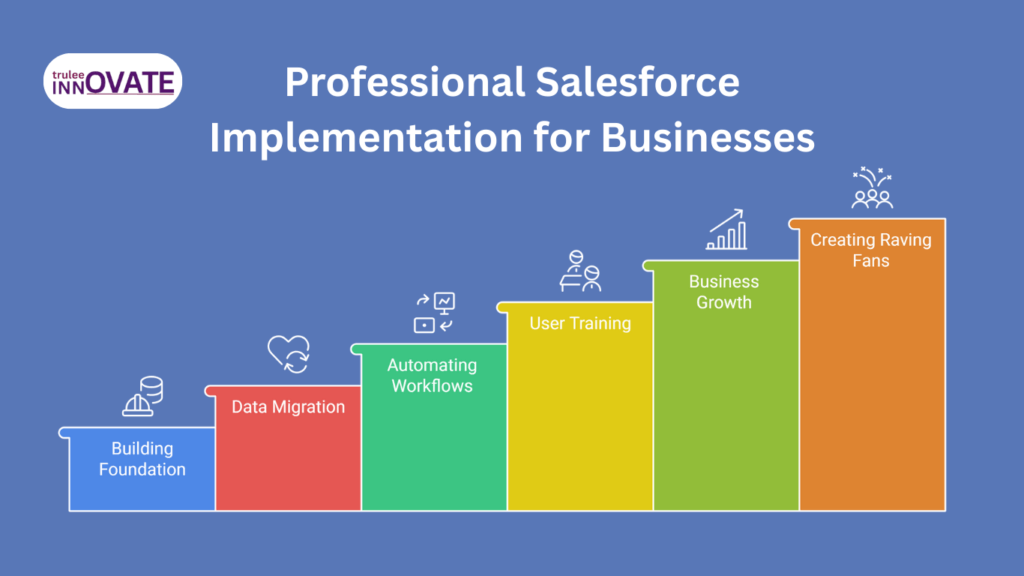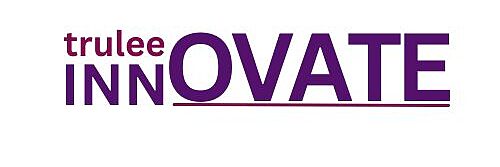Introduction
Let’s be honest. Your business is probably running on a chaotic mix of spreadsheets, old contacts in someone’s inbox, and a whole lot of guesswork. You know you need a better system. You’ve heard about Salesforce, and you know it’s the gold standard—a powerful engine for growth. But buying the engine is the easy part. The real challenge? Getting it installed, fine-tuned, and actually driving your business forward.
This is where so many companies get it wrong. They treat Salesforce like a piece of software you just “turn on.” In reality, it’s more like being handed the keys to a Formula 1 car. Without a professional pit crew and a skilled driver, that incredible machine is just going to sit in the garage, or worse, crash on the first turn. A professional Salesforce implementation is your expert crew, ensuring you not only get on the track but are equipped to win the race.
Think of it this way: a professional partner doesn’t just install software. They rebuild your business processes around a central source of truth, eliminate bottlenecks, and empower your team to do their best work. In this guide, we’ll ditch the technical jargon and talk straight about why getting your Salesforce setup right from day one is the single best investment you can make in your company’s future.
Why You Can’t Afford to “DIY” Your Salesforce Setup
Tempted to save a few bucks and handle the implementation in-house? It’s an understandable impulse, but one that often leads to costly headaches and a failed project. Before you go down that road, you need to understand the common traps that even the smartest teams fall into.
The Common Nightmares of a DIY Setup
Picture this: you’ve spent months trying to get Salesforce running. You’ve imported all your data, but now your sales reps are complaining that half the contacts are duplicates and the account histories are wrong. Your expensive new CRM, meant to be the single source of truth, is now the source of confusion. This is the nightmare of “garbage in, garbage out,” and it’s the #1 killer of CRM projects.
Other common disasters include:
The Ghost Town CRM: You build a system that seems logical to you, but it doesn’t match how your team actually works. It’s clunky, complicated, and slow. So what happens? Your team gives up. They go back to their old spreadsheets, and your powerful Salesforce instance becomes a digital ghost town that you’re still paying for every month.
The “One-Size-Fits-None” Problem: Because personalization is too complicated, you continue to utilize the default settings. Your team quickly discovers that the platform is unable to manage your particular sales process and does not capture the precise data they require. It seems pointless and generic.
The Unknown Security Vulnerability: Salesforce security is strong but intricate. You risk unintentionally giving a junior sales representative access to important client information or your company’s financial projections with only one incorrect user permission setting. You really can’t afford the risk.
The Hidden Price Tag of a Bad Implementation
Lost license payments are not the only expense of a botched Salesforce implementation. The actual expense is astounding:
Reduced Productivity: Your sales staff isn’t making sales for every hour they spend battling the CRM or coming up with manual workarounds.
Poor Decisions: You’re operating in the dark when your estimates and reports are based on inaccurate information. You are unable to make informed choices on market strategy, inventory, or hiring.
Employee Morale: Making your staff employ a system that makes their work more difficult is a surefire way to lead to dissatisfaction and burnout.
The Excruciating Redo: Most businesses eventually need to engage professionals to come in, clean up the mess, and start again after a do-it-yourself setup fails. Compared to simply doing things correctly, this “re-implementation” involves a lot more time, money, and frustration.
The Relief of Bringing in the Pros
A professional partner is a business thinker as well as a technical. They are well-versed in navigating the complications since they have seen it all before. They provide you with:
A True Game Plan: To create a strategic roadmap, they begin by comprehending your objectives and problems. Your Salesforce configuration will be made to address current issues and evolve with your business in the future.
A Quick Route to Ideal Procedures: The experience gained from hundreds of implementations is yours. They are aware of what works and what doesn’t, as well as how to set up Salesforce to have the biggest influence in your sector.
Peace of Mind: You may concentrate on managing your company while they take care of the technological rigors, data horrors, and security setup.
What Does a “Professional Implementation” Actually Include?
What exactly are you paying for, then? This all-inclusive service transforms a blank Salesforce platform into a well-tuned business engine.
Building the Foundation: Setup and Configuration
It’s similar to creating the blueprints for your ideal home. Instead of using a generic template, a partner creates a system that is tailored to your needs. They set up everything, including the structure of your customer accounts and the creation of clear, uncomplicated page layouts that give your staff the information they require without being overly complicated
The Heart Transplant: Data Migration and Security
The most important and delicate step in the process is entering your current data into Salesforce. A professional partner performs the functions of a trained surgeon. To make sure nothing is lost or distorted, they carefully clean, map, and move your data from outdated systems and spreadsheets. After that, they erect a stronghold around it, establishing exact user rights that guarantee no one can access more information than they require.
Automating Workflows to Put Your Company on Autopilot
Here’s where the magic takes place. A partner finds your time-consuming, repetitive manual chores and creates automations to do them. Consider:
- Your website generates a fresh lead, which is immediately matched with the appropriate salesperson.
- When a deal reaches the “Closed-Won” stage, finance immediately creates an invoice.
- When a customer hasn’t heard from their account manager for ninety days, a task is automatically generated for them to follow up.
The goal is to release people from busywork so they may concentrate on high-value activities, not to replace them.
The Final Mile: User Training and Adoption
No more wondering which spreadsheet is the most up-to-date. Sales, marketing, and customer service all work from the exact same customer data. A sales rep can see a customer’s recent support ticket before calling them. Marketing can see which campaigns are actually turning into revenue. This unity eliminates friction and creates a seamless customer experience.
No More Guessing: Know Your Numbers, Grow Your Business
With a properly configured Salesforce instance, your sales pipeline is no longer a mystery. You get real-time dashboards that show you exactly what’s working and what isn’t. You can forecast future revenue with stunning accuracy, giving you the confidence to make bold decisions about hiring, expansion, and investment.
Creating Raving Fans, Not Just Customers
When your team has a 360-degree view of every customer, they can deliver incredibly personalized service. They know the customer’s purchase history, their past issues, and their preferences. This allows you to be proactive, solve problems before they start, and build the kind of loyalty that turns customers into your biggest advocates.

Choosing Your Salesforce Guide: Finding the Right Partner
Not all implementation partners are created equal. You’re not just hiring a vendor; you’re choosing a long-term strategic guide.
What to Look for in a Provider
- Look for a Partner, Not a Coder: You want a team that talks about business goals first and technology second.
- Check the Credentials: Make sure their team is officially Salesforce-certified. It’s a baseline for quality.
- Ask for Proof: Don’t just listen to their sales pitch. Ask for case studies and references from companies similar to yours.
- Find a Great Communicator: They should have a clear, transparent process and be excellent at keeping you in the loop.
Crucial Questions to Ask Before You Sign
- Can you walk me through a typical project for a company like mine?
- How do you handle user training to make sure my team actually uses the system?
- What kind of support do you offer after we go live?
- How do you measure the success of an implementation?
The Home-Field Advantage: Why Indian Businesses Choose Local Partners
For companies in India, working with a local certified partner like Trulee Innovate offers an unbeatable advantage. We understand the nuances of the regional market, offer competitive value, and provide accessible, on-the-ground support. You get world-class expertise without the exorbitant costs and time-zone headaches of a large global firm.
The Difference Between a Tool and a Transformation
Let’s boil it down. What’s the real difference between a basic setup and a professional implementation?
| A Basic, DIY Setup Gets You… | A Professional Implementation Gets You… |
|---|---|
| A Digital Filing Cabinet: A slightly better place to store data. | A Revenue-Driving Machine: A system that actively helps you sell more and serve better. |
| Frustration and Workarounds: Your team fights the system daily. | Confidence and Efficiency: Your team feels empowered by a tool that makes their job easier. |
| A System That Breaks: It can’t adapt as your business changes. | A Scalable Foundation for Growth: A system built to evolve with you for years to come. |
Ready to Start? Your First Steps Are Easier Than You Think
Feeling overwhelmed? Don’t be. Getting started on the right foot is simple.
- Know Your ‘Why’: Before anything else, jot down the top 3-5 business problems you hope Salesforce will solve. Be specific!
- Map Your Mess: Briefly sketch out your current process. Where do things get stuck? Where is information lost?
- Have a Conversation: The next step isn’t a high-pressure sales call. It’s a simple conversation with an expert to explore the possibilities.
Let Truleeinnovate Be Your Guide
At Trulee Innovate, we’re business guides first and tech experts second. We know that a successful Salesforce implementation is about transforming your business, not just installing software. Our entire process is built around understanding your unique vision and turning it into a reality.
We’ll work with you to design a system that your team loves to use, that provides you with crystal-clear insights, and that becomes the unshakable foundation for your company’s growth.
Ready to stop guessing and start growing? Schedule a free, no-pressure strategy session with our team today. Let’s talk about where you want to go, and we’ll show you how Salesforce can get you there.
Final Thoughts
Choosing Salesforce is a smart move. But the decision that will truly define your success is how you bring it to life within your business. Don’t settle for a tool that just sits there. Invest in a professional implementation to build a true strategic asset—one that will pay dividends in efficiency, growth, and customer happiness for years to come.
FAQs
Q1. What is professional Salesforce implementation?
Professional Salesforce implementation is the process of setting up and customizing Salesforce CRM by certified experts to fit a business’s unique needs.
Q2. How long does Salesforce implementation take?
The timeline depends on the complexity of your business processes. A basic setup can take weeks, while enterprise-level implementations may take several months.
Q3. What is the cost of Salesforce implementation for businesses?
Costs vary based on scope, customization, and number of users. A professional partner can provide a tailored estimate after assessing your requirements.
Q4. Why shouldn’t businesses handle Salesforce implementation on their own?
DIY setups often lead to poor adoption, data errors, and limited ROI. A professional ensures correct configuration, smooth migration, and long-term scalability.
Q5. How does professional implementation improve ROI?
By aligning Salesforce with your workflows, businesses can automate tasks, reduce manual errors, boost sales efficiency, and achieve faster returns.


